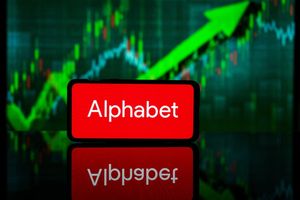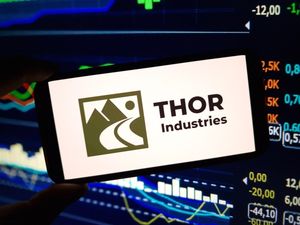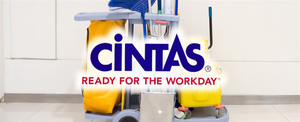-- Introduction
Ika is a decentralized Multi-party Computation (MPC) network designed to enable secure cross-chain asset control through its novel distributed wallet, the dWallet, technology. Built on the high-performance Sui codebase, Ika combines advanced cryptography with economic incentives to achieve multi-chain interoperability without relying on traditional bridges or custodians.
In essence, Ika allows Sui smart contracts and users to manage assets on other blockchains natively, opening a new era for blockchain interoperability.
Follow us on X: https://x.com/BloFin_Academy and visit our webpage: https://blofin.com/academy for updates on crypto technologies, market insights, and global macro trends.”
The Problem of Blockchain Interoperability Today
Blockchains today are like separate islands, each with its own assets and rules. Moving assets or data from one chain to another is hard. If you want to use your Bitcoin on Ethereum’s DeFi apps, or move tokens from Solana to Binance Smart Chain, you typically have to use something called a cross-chain bridge.
These current solutions come with big trade-offs and risks. For example, many bridges work by locking your coins in one place and issuing “wrapped” copies of them on another chain. This adds a lot of complexity and points of failure, if the bridge’s operators misbehave or if the smart contracts have bugs, funds can be stolen or lost.
Similarly, some interoperability approaches rely on a small federation of validators or an honest custodian, effectively meaning centralized control. These setups often trade off security or performance for the sake of basic cross-chain functionality, creating single points of failure and bottlenecks.
Ika Key features
dWallet Primitive
Ika introduces decentralized wallets (dWallets) as a new blockchain primitive that lets smart contracts on Sui directly control assets on external chains (like Bitcoin, Ethereum, Solana, etc.) without wrapping or bridging tokens.
A special Sui object called DWalletCap acts as a connector between Sui and Ika: a Sui dApp can hold a DWalletCap pointing to an Ika-managed wallet on another chain, and use it to sign transactions on that external chain. Unlike a bridge, no assets are ever locked or replicated on Sui, instead, Sui smart contracts simply generate valid signatures controlling the native assets on the source chain, enabling truly native cross-chain functionality.
Importantly, a dWallet is not controlled by any one person or server; it’s controlled collectively by the user (or a smart contract) plus a decentralized network of signers. The dWallet’s distributed signers co-sign it with you. Only when the required parties (you and the network) both approve will a valid transaction signature be produced. This design ensures that actions from a dWallet obey whatever rules have been set in code (for example, requiring certain conditions or time locks) and that no single entity can unilaterally use the wallet.
Zero-Trust Infrastructure:
Ika employs a two-party multi-party computation (2PC-MPC) cryptographic protocol that splits signing authority between the user and a decentralized network of nodes. This ensures user participation in every transaction, so no single party ever controls the assets or private keys. This zero-trust design means even if the network’s nodes collude, they cannot move funds without the user’s consent. Every operation requires cooperation between the user’s share and the network’s share of the key, dramatically reducing single points of failure and honeypot risks.

Performance and Scalability
By building on Sui’s parallelized, high-throughput architecture, Ika achieves unprecedented speed for an MPC network. The network can handle up to 10,000 threshold signature operations per second with sub-second latency.
This is orders of magnitude faster than typical multi-party signing systems. Sui’s Mysticeti consensus engine provides fast finality, ensuring that cross-chain transactions can be confirmed on the Ika network almost instantly.
This high degree of parallelism means the network can scale as usage grows, maintaining low latency even under heavy load. For developers and users, the result is a seamless experience where cross-chain dApps feel as fast and responsive as native Sui dApps.
Token Utility & Governance
The IKA token is integral to Ika’s design, it fulfills three primary roles within the ecosystem:
- Stake to secure the network and earn rewards.
- Pay for network operations, such as generating dWallets or signatures.
- Vote on governance decisions to shape Ika’s future.
Security (Staking)
IKA is a delegated proof-of-stake blockchain. Validators (the MPC signer nodes) stake IKA tokens to participate in Ika’s consensus and threshold signing process. Honest participation is incentivized by staking rewards (nodes earn a share of fees and potentially inflationary rewards), whereas malfeasance can be penalized by slashing staked tokens.
Payments
Users pay fees in IKA for various network operations. For example, when a user creates a new dWallet (which involves distributed key generation) or requests a threshold signature from the network for a transaction, a fee in IKA is required.
These fees provide compensation to the MPC signer nodes for the computational work they perform and help prevent spam or misuse of the network. Different cryptographic operations may incur different fees based on their complexity. For instance, generating an ECDSA signature for one chain might have a different cost than an EdDSA signature for another chain, reflecting the computational effort involved. By using a native token for payments, Ika creates a closed-loop economy where usage of the protocol directly rewards those who help run it.
Governance
Ika employs a decentralized on-chain governance model of IKA stakers/holders, allowing proposals on protocol upgrades, economic adjustments, and other changes to the network.
Token Supply & Distribution
Ika’s economic model was crafted to favor the community and long-term network growth. The initial token supply is 10 billion IKA, and the vast majority (over 60%) is allocated to community-centric programs.

Source: IKA
- 46% of the supply is reserved for a community reserve to support development grants, ecosystem incentives, and other initiatives that grow usage
- 8.25% is earmarked specifically for ecosystem incentives (like liquidity programs or rewards for early users), and a share is distributed via initial community airdrops (about 6% at mainnet launch)
Early contributors and backers (such as the core team, advisors, and venture supporters) collectively received 40% of the initial supply. Critically, these tokens are locked up for long durations. All insider allocations are subject to a three-year lockup, with no tokens released in the first 6 months, and gradual unlocks afterward.
Conclusion
Ika offers an approachable and innovative solution to a complex problem. By using dWallets and the 2PC-MPC protocol, it tackles interoperability issues in a way that enhances security, all while aiming to keep performance high. For everyday crypto users, this could mean a future where interacting with multiple blockchains is as easy as using a single one, no extra trust assumptions, no technical headaches, and far less risk.
As the project evolves, it will be exciting to watch whether Ika becomes the new standard for cross-chain interactions, potentially enabling a wave of decentralized apps that were not possible before.
The BloFin Academy (https://x.com/BloFin_Academy | https://blofin.com/academy), the research and education arm of BloFin Exchange, provides both high-quality research and crypto academy content. Combining strict quantitative methodologies with accessible learning materials, we deliver industry-leading insights into the crypto market by analyzing multi-market derivatives data, macroeconomic trends, and more.
Contact Info:
Name: PR Team
Email: Send Email
Organization: BloFin
Website: https://blofin.com
Disclaimer:
This press release is for informational purposes only. Information verification has been done to the best of our ability. Still, due to the speculative nature of the blockchain (cryptocurrency, NFT, mining, etc.) sector as a whole, complete accuracy cannot always be guaranteed.
You are advised to conduct your own research and exercise caution. Investments in these fields are inherently risky and should be approached with due diligence.
Release ID: 89170763
In case of encountering any inaccuracies, problems, or queries arising from the content shared in this press release that necessitate action, or if you require assistance with a press release takedown, we urge you to notify us at error@releasecontact.com (it is important to note that this email is the authorized channel for such matters, sending multiple emails to multiple addresses does not necessarily help expedite your request). Our responsive team will be readily available to promptly address your concerns within 8 hours, resolving any identified issues diligently or guiding you through the necessary steps for removal. The provision of accurate and dependable information is our primary focus.





